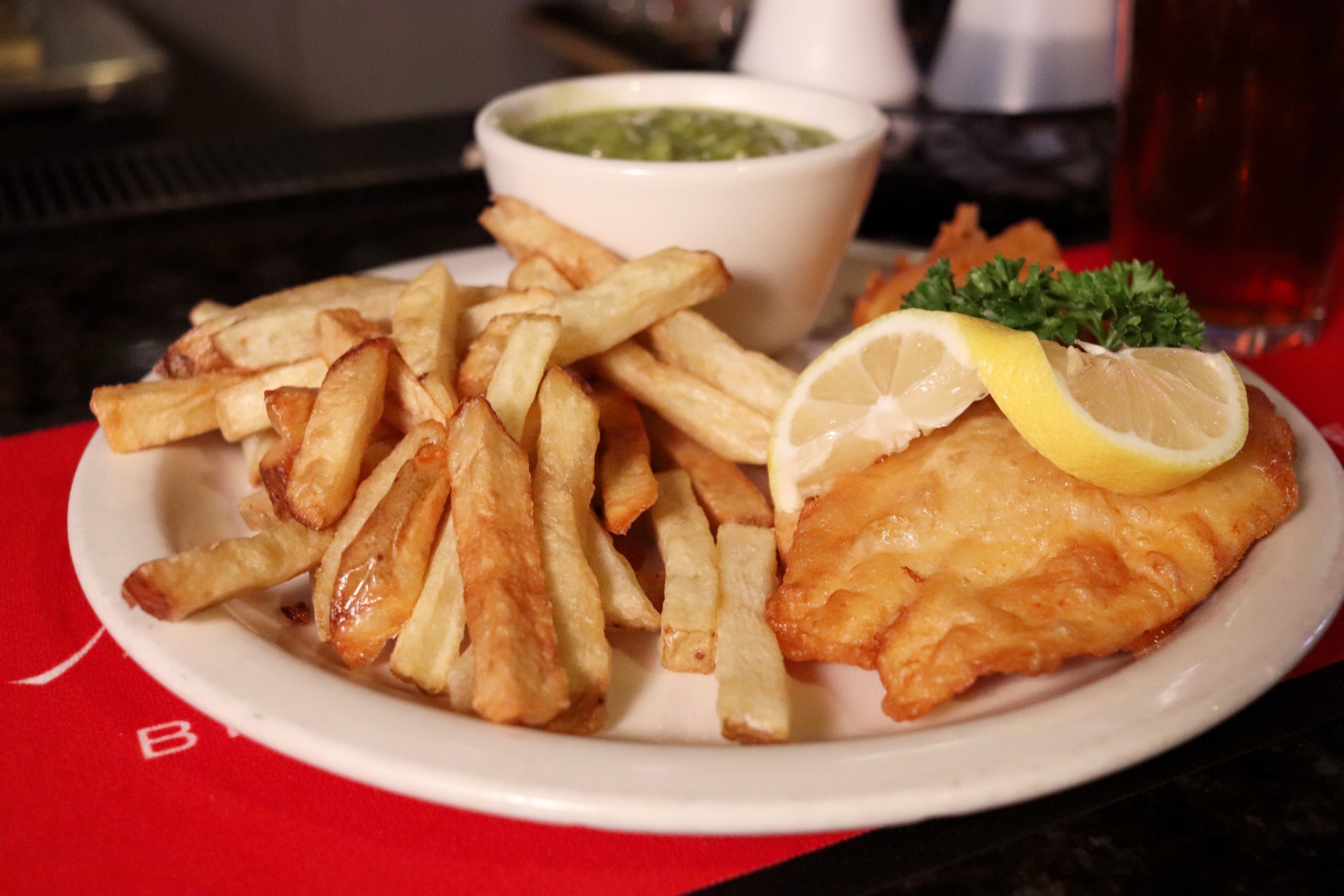The Humble Beginnings
The story of fish and chips does not commence amidst the misty streets of Victorian Britain but across the sun-kissed coasts of Portugal and Spain. The story begins in the 17th century when the Jewish immigrants fleeing persecution brought along with them this gastronomic jewel called “pescado frito” or fried fish. These Sephardic Jews were masters of frying fish, coating it in flour, and then dipping it in hot oil. This special technique gives the fish a crispy outside and a moist inside, creating a dish which is straightforward and incredibly tasty.
The Fusion of Fish and Potatoes
As the tradition of fried fish took hold in Britain, another staple food was already cementing its place in the British diet: the potato. The potato was introduced to Europe in the late 16th century, quickly becoming an indispensable source of nutrition, mostly for the poor. The marriage between fried fish and fried potatoes was not one of inevitability but one of timing and geography.
The Industrial Revolution of the 19th century also played its role in bringing the two together. The steam engine and the spread of the railway network meant that fresh fish could be brought from the coasts to the rapidly growing industrial towns and cities. Potatoes, already being grown and eaten in plenty, were an easy and accessible accompaniment.
The First Fish and Chip Shops
The exact origins of the first fish and chip shop are a matter of contention, though two main claimants are often referred to. It is widely attributed to Joseph Malin, a Jewish immigrant, who is said to have opened the first fish and chip shop in London around 1860. Malin’s shop combined the Jewish tradition of fried fish with the British taste for fried potatoes and served them together in a format that soon became very popular.

In the North of England, John Lees is said to have opened his own fish and chip shop in Mossley, near Manchester. By 1863, Lees was selling fish and chips out of a wooden hut in the market, providing a prototype of what was to become a staple across the country.
A Working-Class Staple
Hence, fish and chips came to be promoted as inseparably connected to Britain’s working-class communities. Cheap, filling, and nutritious, fish and chips became a fitting meal for workers in the smoky and bustling cities of the Industrial Revolution. The fish provided protein and the potatoes carbohydrates, at a cheap price. It was easy to eat on the move, wrapped in newspaper, ideal in fact for factory workers and laborers.
By the late 19th century, shops were opening everywhere, serving fish and chips. Many were run by families and represented staples in communities with their warm lights and savory smells—a comforting respite from the hostile facts of industrial life.
The War Years
During the two World Wars, fish and chips became a linchpin to British morale. While foodstuffs were rationed, fish and chips were never added to the list. This decision of the government underlined the importance of the dish to the diet and spirit of the nation. It was familiar comfort during an unfamiliar time of uncertainty and hardship.
Post-War Popularity
After the war, fish and chips continued to thrive. It came to be representative of the very essence of British culture, the essence of survival and the resourcefulness of the people. Seaside towns, of course, became synonymous with fresh fish supplies and thus renowned for their fish and chip shops, attracting visitors who yearned for the simple pleasure of eating hot, crispy fish and chips by the sea.
A Culinary Icon
Today, fish and chips are a loved British institution, but their love has been shared between the best high-quality restaurants and humble chippies. The dish has traveled far beyond the UK into other parts of the globe, finding new fans and variations. In Australia, New Zealand, and Canada, for example, it has become a favorite, and in most cases, it is adopted to include types of regional fish and side dishes.
Despite such adaptations, fish and chips remain quintessentially about fresh fish, fried to perfection, served with thick-cut chips. Traditionally served with a sprinkling of salt and a dash of vinegar, it is a dish that connects generations and social classes, a culinary icon that evokes nostalgia and pride.
Cultural Significance
But fish and chips is not just a tale of food; it is a tale of immigration, industrialization, and community—a tale of the diffusion of cultures with the impacts of technological advancement and a simple, heartwarming meal in life. Every fish and chip shop has its own story, normally passed on from generation to generation, contributing to the rich tapestry of British culinary history.
When we celebrate fish and chips, we celebrate the resilience and ingenuity of the people who created and sustained it. From the Jewish immigrants who brought their frying techniques to Britain, to industrious entrepreneurs who saw the opportunity of paring fish with potatoes, to the innumerable shop owners who have carried on the tradition today, fish and chips are a testament to the lasting power of good food to bring people together.
In a rapidly changing world, fish and chips remain a comforting constant, a delicious reminder of the past, and a cherished part of Britain’s cultural heritage.



